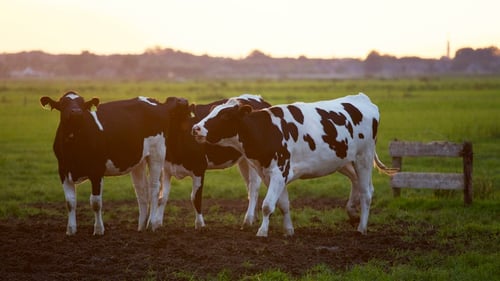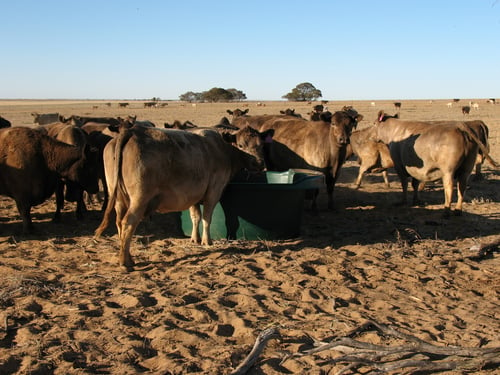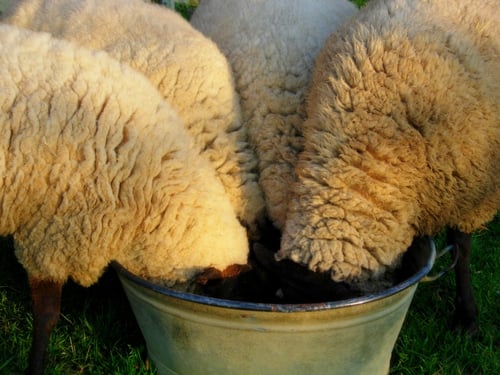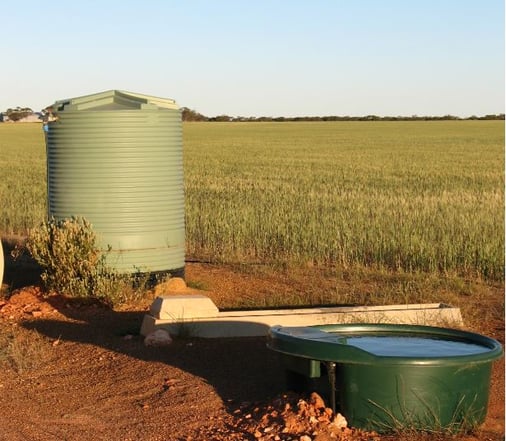Did you know that you could limit the possibilities around your farm with the wrong trough
and enhance conditions with the right one? It all hinges on whether you're using permanent
troughs or temporary troughs. Find out which type of water trough benefits your farm more.
Permanent (Fixed) Troughs
A permanent livestock trough is one that is fixed into one position. That is, they are immovable and cannot be relocated. They are mostly made of concrete. Let’s explore its advantages and disadvantages:
Advantages of fixed troughs:
-
Sturdy and heavy enough to prevent animals from accidentally overturning them or tripping over them.
-
You have greater freedom around designing them so that they feature more rounded corners and lesser jagged edges. Take note, though, of the harm that your livestock may be exposed to as the concrete deteriorates.

Damaged concrete trough.
Disadvantages of fixed troughs:
-
Heavy and difficult to move around, making tactical grazing more complicated than it should be.
-
Owing to its immobility, you may require many troughs to use across different locations which affects costs.
-
All these troughs across different paddock locations require cleaning especially during summer. A lot more time and energy are needed for this activity.
-
Scarring around the trough.
Temporary Livestock Troughs
Temporary livestock troughs are made of more lightweight material, such as polyethylene. They are lightweight and easier to clean. The benefits around clean livestock troughs especially in the summertime is something worthy of exploring. Additionally, temporary livestock troughs are easier to relocate. Why is this significant?
That’s because easily, well-positioned livestock troughs welcome the following benefits around your farm:
-
More even grazing / easier to implement tactical grazing
Tactical grazing pertains to the strategy involved around implementing set stocking and rotational grazing.
Set stocking is simply the practice of livestock grazing on one location or paddock over an extended period which, over time, results in damage to the paddock.
On the other hand, rotational grazing allows for grazing on multiple paddocks, which allows previous paddocks to rest and encourage pasture growth before they are utilised for grazing once again. Since temporary troughs are easy to move around, it is likewise easier to develop a tactical grazing strategy that benefits your livestock and respects your paddocks.

Rotational grazing encourages pasture growth in previous paddocks.
-
Reduced trampling of grass and pugging damage on fragile soil
Where livestock population is too heavy, plants may not be able to survive the traffic as certain species of plants are more sensitive to traffic than others. Whether you have cattle or sheep also factors in, since cows are heavier than sheep. Soil that is trampled on becomes packed which greatly reduces its ability to absorb moisture.
Livestock population plays a role in the plants' staying power.
One type of damage that your soil can suffer from livestock traffic is called ‘pugs’ - the soil indentations on paddocks, especially on wet or damp soils, from animal hooves. These can drastically reduce pasture production as seedlings and regrowth get smashed back in.
-
Lesser pressure on existing water sources or water points and reduced risk of water loss
If a group of cattle needs to drink water, 5 to 15 percent of them should be able to drink at the same time with adequate space for each one. If water points/sources do not meet these requirements, your livestock’s health may suffer.

Livestock oftentimes drink together, highlighting the need for adequate space around a trough.

Temporary troughs can also be placed as additions near fixed troughs and other water points.
-
Improved removal of seeds
Pastures are impacted by grazing during periods of reproduction. You can take advantage of this by grazing in a paddock to target unwanted species or resting a paddock to encourage seed production of desirable species.
You may encourage grazing specifically to target invasive weeds.
-
Better distribution of nutrients from livestock dung and urine
Livestock manure and urine are beneficial to plants. This knowledge can be used in tactical grazing. Determine where you want plants to receive more nutrients, set up a water point there with a temporary trough, and get the benefits out of the free nutrients. 
It's clear that the type of trough can greatly impact your options for an improved livestock farm – whether for better or worse! It's easier to reap the benefits mentioned above with temporary troughs which help you set up temporary water points where needed, benefits that are harder to achieve with permanent/fixed troughs. 
Left: Cup and saucer; Right: Ultra tub trough
Temporary livestock troughs such as ones made from polyethylene allow for greater flexibility around your property. Due to their adaptability, they enable your farm to benefit in multiple ways. Very much like hitting two birds with one stone; although, if you consider the points made above, it’s really more than just two birds!
Related article:5 Things You May Not Know About Concrete Troughs









What do you think about this post?
Comments